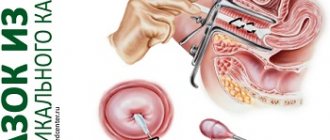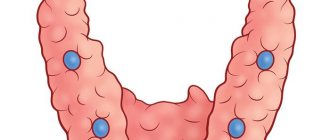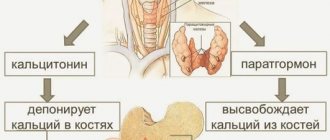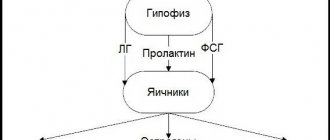Young girls who will become mothers in the future should know what menstruation is and why they are needed. This cyclical process will accompany them until the completion of reproductive functioning. This article will tell you everything about menstruation: their duration, frequency of occurrence, changes in the body that they provoke.
What is the menstrual cycle?
So, to the question of what the menstrual cycle is, the answer is simple. This is a rhythmic physiological process in which a woman prepares for pregnancy. To explain in detail what the menstrual cycle is, we can say that it is a certain period of time that begins with the first day of menstruation and ends with the last day before the next menstruation. That is, the beginning of the menstrual cycle is the first day of menstruation.
The cycle is repeated monthly for all women, except pregnant and lactating women.
When a girl is born, about 1.5 million eggs are already deposited in her ovaries in utero. After puberty, their number decreases to 350-450 thousand pieces. After the onset of the first menstruation, once a month, one egg leaves the follicle and prepares for fertilization; if this does not happen, menstruation occurs.
It is the duty of every woman to know about it and be able to feel her body.
In addition to the article, our online store offers you modern intimate feminine hygiene products that will help you get through your period with maximum comfort and safety.
For example:
The menstrual cup is an ultra-modern product for feminine intimate hygiene. Gives a new degree of freedom during the period. Menstruation is no longer a reason to procrastinate or feel inconvenienced.
We always have in stock a simply gigantic assortment of silicone menstrual cups from various manufacturers.
Germany, Finland, Spain, Russia, China. Anatomically shaped, with a valve, with a “stem”, “ring”, “ball” tail type... sets of bowls made of safe medical silicone and thermoplastic elastomer...
You can get acquainted with it and choose the one that suits you on the product page:
Special reusable menstrual panties, protective with a waterproof layer, or hygienic, which can be worn without tampons and pads. It's easy to choose your size from products from more than 10 manufacturers.
In the photo, the panties are worn on the model inside out so that you can estimate the size of the absorbent and protective waterproof layers “from elastic to elastic.”
With high, medium or low waist. Slips, bikinis, and even thongs.
Visit our online store page with special underwear for your period: “Menstrual panties”
Duration of the menstrual cycle
Girls begin their first periods between the ages of 11 and 14. At this time, the cycle can be of varying lengths and irregular. This is due to the girl’s incomplete hormonal stability. It may even take several years for the menstrual cycle to stabilize.
Many women wonder how many days does a normal menstrual cycle last? The duration of the menstrual cycle is individual for each woman, but it should be within the normal range - from 21 to 35 days. It happens that the duration of the menstrual cycle in women deviates from these figures by 2-3 units, but this is also considered the norm.
Interesting! The most ideal female cycle by day is 28 days. This is how long the menstrual cycle should last. But a slight difference from this figure does not mean pathology.
Pain during menstruation and ways to eliminate it
Quite often, in the first days of menstruation, a woman complains of discomfort and poor health. There may be nagging pain in the lower abdomen and pain in the lower back. Every woman is individual. And if for some menstruation is a time of discomfort, then for others this period does not in any way disrupt the established rhythm of life.
To relieve pain during menstruation, experts recommend using several methods:
- Warm bath . It relaxes the muscles and reduces uterine contractions. Important: the water in the bathroom should be warm, not hot.
- Hot water bottle with warm water . The effect of its use is similar to the effect of a warm bath.
- Abdominal massage . You need to massage with smooth, circular movements in a clockwise direction.
- Raspberry or chamomile tea is good for reducing pain . In especially severe cases, taking painkillers is recommended.
- The fetal position helps relieve pain.
Phases of the menstrual cycle
There are 2 phases of the cycle, between which ovulation occurs.
First phase
What is the first phase of the menstrual cycle? The onset of the menstrual cycle begins with the follicular phase. The first phase of the menstrual cycle begins on the first day of menstruation and ends before the onset of ovulation. That is, it lasts about 14 days. The most important process in this phase is the maturation of the follicle, which occurs under the influence of follicle-stimulating hormone.
Follicles are small cavities containing an unripe egg. On the 1st day of menstruation, the level of follicle maturation is minimal, as is the low level of estrogen (female hormones). As the days pass, these numbers increase.
So, on the 13th and 14th day of the cycle, the egg is ready to leave the follicle, and estrogens create favorable conditions for fertilization. They increase the secretion of cervical mucus, through which it is more convenient for sperm to move, and also regulate at this time a good flow of blood with nutrients to the uterine mucosa, so that in the event of pregnancy, the fertilized egg does not need anything.
What is menstruation in girls?
Before talking about cyclical physiological characteristics, you need to find out what menstruation is.
This term refers to the stage of the cycle, which is characterized by peeling and rejection of the outer layer of the uterus - the endometrium. Menstruation is a regular process that begins on the first day of the cycle.
Critical days are often accompanied by unpleasant sensations. Therefore, until they are completed, it is difficult for a woman to maintain working capacity.
The process of separation of the uterine endometrium in gynecology is called desquamation. During this period, blood comes out of the vagina, which may contain small clots and particles of the endometrium.
Once desquamation is complete, the outer uterine layer becomes thicker. Thanks to its compaction, favorable conditions are created in the body for the attachment of a fertilized egg.
That is, the main function of critical days is to prepare the body for pregnancy. If conception does not occur, their main mission becomes purification. After completion of the reproductive stage, which occurs around 45–48 years of age, the endometrium does not separate from the uterus.
Girls can start having their first periods at age 12. In gynecology they are called “menarche”. Most teenagers become sexually mature at this age. That is, the presence of menstruation indicates the body’s readiness to conceive and bear a fetus.
For more information about how menstruation occurs and what happens in the body during this time, read a separate article on our website.
Type of menstrual flow
Sometimes menstruation in girls indicates the development of a pathological process in the body. Therefore, to maintain reproductive functioning, you need to know which discharges are considered normal and which are not.
Classification of menstrual flow:
- Spotting. Appear mainly a few days before the onset of desquamation. Brown color. If discharge is observed during menstruation, this may indicate erosion of the uterine cervix, exhausted ovarian syndrome, polyps or neoplasms in the genital area and other ailments.
- Very scarce. The volume of such secretions does not exceed 35–40 ml. They arise due to hormonal imbalance. Sometimes scanty periods appear before some important event, such as a wedding, that is, during a period of strong psycho-emotional stress.
- With clots. There is no need to worry about the presence of clots in your monthly discharge, because it is essentially coagulated blood. They often form if a woman leads a sedentary lifestyle.
- Abundant. The volume of such secretions is more than 80 ml. Usually they do not go away on the 6th–7th day. Their presence may indicate cancer, uterine polyps, or endometriosis. Also, a large output of menstrual blood is a symptom of an ectopic pregnancy.
The color of normal menstrual flow is bright red. In the second half of desquamation they turn brown.
As for the release of yellow or green foamy fluid from the vagina during menstrual periods, this is a pathology. Its presence may be associated with an inflammatory process in the pelvic organs, as well as candidiasis and other gynecological diseases.
What happens in the body
During menstrual periods in women, the endometrium is actively torn away from the uterus. This process is accompanied by bleeding from the vagina. Menstrual discharge contains enzymes that prevent it from clotting.
Blood flow contributes to the rapid removal of endometrial remnants from the body. The amount of fluid depends on the duration of menstruation and other cyclical features.
If the egg has been fertilized, the endometrium is completely renewed. For 9 months it serves as additional protection for the fetus.
In the absence of pregnancy, the renewed upper layer of the uterus is released from the body along with menstrual blood.
Symptoms of critical days
Most women experience discomfort during menstrual periods. Their occurrence is associated with increased hormonal activity at this time.
Main symptoms of menstruation:
- Aching or nagging pain in the ovarian area (lower abdomen).
- Nausea. Sometimes it may be accompanied by vomiting.
- Breast swelling.
- Increased irritability, tendency to sudden mood swings.
It is worth noting that not all representatives of the fair sex experience these unpleasant symptoms. According to statistics, 45% of women do not experience any discomfort during menstrual periods.
Additional signs of desquamation:
- Anxiety, apathy.
- Pain in the heart area.
- Frequent urination.
- Panic attacks.
- Slight increase in body temperature.
Duration of menstruation
Women have periods until reproductive function is complete, that is, until menopause.
The duration of menstrual bleeding varies among girls. On average, menstruation lasts from 3 to 7 days.
The first desquamation is usually not characterized by abundance and duration. In 12-year-old girls at menarche, the amount of vaginal blood released does not exceed 10 ml.
Reasons why the menstrual cycle is disrupted
Menstrual irregularities or absence of menstruation may indicate various abnormalities:
- stress. Outbursts of emotions greatly affect the menstrual cycle in women. This is due to a hormone imbalance that occurs during strong experiences. Therefore, you should not be surprised when, after severe stress, your periods come a little earlier or with a delay;
- change in climatic conditions. Very often, the menstrual cycle can be disrupted due to a trip to somewhere where the climate is different from usual. Or this is possible during sudden warming or cooling;
- lifestyle changes. Even such changes as changes in diet, lack of sleep, exercise, sudden lack of sex, or, conversely, its appearance, can affect the delay of menstruation;
- body mass. The duration of the menstrual cycle may also depend on sudden weight loss or weight gain;
- past illnesses. We are talking about diseases such as chickenpox in adults, influenza, rubella. After these infections, the follicles may be delayed in maturation. It is worth considering that a delay in menstruation is possible even after suffering from acute respiratory viral infection;
- hormonal disorders. If a woman has disturbances in the functioning of the endocrine system, then it is quite possible for her to have a shift in her menstrual cycle. Most often this is observed in pathologies of the thyroid gland, ovaries and adrenal glands;
- contraceptives. If you choose the wrong contraceptives, you may also experience a delay in menstruation. This is due to the fact that the basis of all medications is the restructuring of hormonal levels, which affects the duration of the menstrual cycle. Therefore, you should select contraceptives carefully, and always with the help of a doctor;
- abortion. Abortion is a serious stress for the whole body. It takes time to restore the hormonal system, so quite long delays in menstruation can be expected;
- pregnancy. One of the main “symptoms” of pregnancy is the absence of menstruation. To confirm this, you can do a test, or get tested for hCG. Human chorionic gonadotropin appears already 5-8 days after fertilization of the egg. This is the most reliable test to confirm pregnancy.
Why do women need periods - functions of discharge
During the regulative period in women, the inner epithelial layer in the uterus is renewed monthly, undergoing irreversible changes and being rejected as unnecessary. In the new cycle, the process of “rebuilding” the endometrium is restarted, during which the body prepares for possible conception.
In simple terms, menstruation is a reminder to a woman of her main purpose, to be a mother.
In addition, menstruation is needed to perform the following functions.
- Update. Since the inner uterine layer consists of epithelial cells, which are characterized by the process of exfoliation, like the cells of the skin, intestinal mucosa and bronchi, menstruation allows you to cleanse the uterine cavity of old and exfoliated endometrium. After the critical days, the uterus is cleansed and ready to grow a new epithelial layer.
- Biological protection. There is a theory according to which the functional uterine layer is able to recognize defective processes in a fertilized egg (chromosomal abnormalities, defective DNA), as a result of which it deliberately prevents its implantation, preventing “wrong” pregnancy. The defective zygote dies and is excreted along with the exfoliated epithelium during the next regulation.
Types of menstrual irregularities
You can differentiate menstrual cycle disorders by its duration. To do this, you need to know which menstrual cycle is considered normal. So, there are these types of violations:
- Polymenorrhea. This term implies a short cycle, that is, if a woman has a cycle of 21 days or less. If a woman is on day 22 of her cycle, this is considered normal. With polymenorrhea, ovulation may not occur. This is dangerous due to the difficulty in getting pregnant.
- Oligomenorrhea. If a woman has oligomenorrhea, then menstruation can occur with a difference of 40-90 days. That is, a situation where the menstrual cycle is 40 days can be considered a deviation. One of its manifestations is constant irregularity of menstruation, as well as scanty and light bleeding.
- Amenorrhea. This diagnosis is confirmed if a woman’s menstruation delay lasts more than 6 months. Amenorrhea can be primary or secondary. Primary – when, in girls over 18 years of age, menstruation did not begin at all. Secondary - when menstruation suddenly stops, although before this, the woman had a normal menstrual cycle.
- Dysmenorrhea. The term means irregular menstruation, that is, constant shifts in the menstrual cycle. For example, if a woman’s cycle consists of 27 days, and her period begins on the 21st day of the cycle, this is considered dysmenorrhea. Or vice versa, when the cycle consists of 30 days, and menstruation began on the 24th day of the cycle, it is also considered a pathology.
It is possible to differentiate menstrual irregularities based on the nature of the bleeding:
- Scanty discharge (hypomenorrhea). In this case, only spotting bleeding is observed, with a cycle duration of 3-4 days. Usually for a woman they pass normally with absolutely pronounced premenstrual syndrome (without a feeling of weakness, nagging pain in the lower abdomen and lower back).
- Copious discharge. Discharge of more than 250 ml per cycle is considered heavy. The duration of menstruation in such women is 6-7 days, with the presence of pronounced premenstrual syndrome.
- Intermenstrual discharge. If spotting appears after menstruation, this is a reason to consult a doctor, as it may indicate a serious pathology. During the release of the egg (in the middle of the cycles), a few drops of blood may be released due to damage to the endometrium. But, do not confuse intermenstrual bleeding with a small amount of blood during ovulation. It is worth noting that during such discharge the duration of the menstrual cycle should not change.
How menstruation affects the body
What happens to the female body during menstruation, before it starts and after it ends, depends on the woman’s general health. A completely healthy body practically does not react to these changes. More precisely, the changes that occur remain imperceptible and unnoticeable. Except that on the first day there is pain - at the moment of separation of the unfertilized egg.
If there are any health problems, then the notorious PMS appears. Back and lower back pain, irritability, dizziness, headaches of unknown origin. Exacerbations of chronic diseases are also possible. Due to hormonal imbalance, decreased immunity may occur. This means there is a higher likelihood of viral diseases and allergies.
It is also important to remember that everything that happens to the body will, one way or another, affect menstruation. Whether it is a routine operation or a complex pathology.
Which doctor should I contact?
If there are shifts in the menstrual cycle, a woman should consult a gynecologist. After an examination in a gynecological chair, the doctor may suspect a pathology associated with delayed menstruation. But, to clarify and confirm the diagnosis, a woman needs:
- take a general blood test;
- submit a smear for microscopic examination;
- do an ultrasound of the genital organs.
Hygiene during menstruation
Blood is a breeding ground for bacteria, so proper attention should be paid to hygiene. First, you need to use products that absorb discharge - pads (attached to underwear) or tampons (inserted into the vagina). They change as they are filled, but at least once every 4 hours. Secondly, you should wash yourself with warm running water. Just wash yourself; swim in a bathtub, pool, ponds, etc. Not recommended. In addition, heavy exercise should be avoided, as this may increase the discharge.
Sexual intercourse during menstruation is acceptable, but the use of a condom is highly recommended. But it is worth noting that some men and women take a “break” during their periods to wait out the discharge.
Treatment of menstrual disorders
Treatment of menstrual irregularities can be different, depending on the cause of the pathology. If a woman does not have a normal menstrual cycle, the problem is treated with conservative, surgical, folk and mixed methods.
Conservative treatment
Medicines are selected based on the cause of menstrual irregularities.
- If menstruation is irregular, women are prescribed oral contraceptives. The disadvantage of using these drugs is that quite often there are situations of individual intolerance to contraceptives, as well as a temporary effect (when a woman stops taking the drugs, the cycle starts again);
- hormones. If the absence of menstruation is associated with hormonal imbalances, the doctor may prescribe synthetic analogues of hormones. After a course of treatment with them, the menstrual cycle in women is completely normalized;
- hemostatic drugs. Such drugs are prescribed to women with heavy blood loss. It is worth remembering that you cannot take such drugs spontaneously, as they cause complications in the form of thrombosis.
Surgery
Surgery may be necessary for women who have cysts or ovarian tumors. Also, surgical resolution is required if blood clots accumulate in the uterine cavity.
Typically, all of the above operations are performed under general anesthesia. How long the surgical intervention lasts depends on the pathology.
Important! After surgery, the woman will also need conservative treatment. Without taking medications, the desired effect cannot be achieved, and the normal menstrual cycle may not return.
Traditional methods of treatment
Treatment with traditional methods must be discussed with a doctor.
Remedy for painful menstruation
If a woman has a normal menstrual cycle, but is characterized by pain, a remedy can be prepared to reduce pain on these days. You should prepare a decoction of horsetail. To do this, you will need the leaves of the plant, which need to be poured with boiling water and then allowed to brew for 3-4 hours. You need to drink 1 tablespoon of the decoction every 3 hours.
The product helps especially well on the first day of menstruation - the most painful of all cycles.
Remedy for absence of menstruation
For amenorrhea, you can prepare a decoction of onion peels. To do this, you need to fill the peels of 1 kg of onion with 1.5 liters of water. Boil until the water turns dark red. After the prepared mixture has cooled, it can be taken half a glass 3 times a day.
Remedy for menstrual irregularities
If a woman has a cycle disorder and her periods are irregular, then you can prepare a decoction of parsley seeds. To do this, pour the crushed seeds (3 tsp) with a glass of boiling water. After this, the broth needs to be cooled and strained. You need to take it 1 tbsp 3-4 times a day. To restore normal cycles, the course of treatment will be 1 month.
If a woman’s monthly cycle is disrupted for any reason, it is necessary to consult a doctor, as self-medication can lead to multiple complications.
What happens to the body
Throughout the menstrual cycle, hormonal and physiological changes occur in the body, all of them occur cyclically and sequentially. Conventionally, the cycle can be divided into the following phases.
- Follicular. Its beginning is considered to be the first day of menstruation, and it ends with the onset of ovulation, approximately on days 11-16 of the cycle. During menstruation, the exfoliated endometrium is removed, and in its place a new epithelial layer begins to grow, while the woman’s health may worsen, she feels unwell and lacks strength. At this time, the dominant follicle begins to mature in the ovary under the influence of estrogen; when it bursts, the cycle moves into the next phase.
- Ovulation. At this time, the follicle matured and burst, and an egg came out of it, completely ready for fertilization. It moves along the fallopian tube into the uterine cavity, where it is supposed to take hold in the endometrium subject to fertilization. Ovulation occurs approximately in the middle of the cycle, this is the most favorable time for conception.
- Luteal. In place of the burst follicle, the corpus luteum begins to form; this is a temporary gland that produces progesterone, the pregnancy hormone. Estrogen levels gradually decrease during this phase. Before menstruation, that is, in the second half of the cycle, the inner layer of the uterus is highly elastic, which is an important parameter for normal implantation of the embryo. If fertilization occurs, approximately a week after this the constantly dividing zygote is fixed in the endometrium. The state of pregnancy from this moment until the formation of the placenta is maintained by the hCG hormone. If the egg is not fertilized in a given cycle or it happened with an “error,” the fertilized egg does not attach, the level of estrogen and progesterone drops, and the endometrium, without the support of hormones, begins to collapse and exfoliate. This is how a new menstruation and a new cycle begins.
All processes during the menstrual cycle are controlled by hormones, so it is very important that the hormonal balance in the female body is always normal. Otherwise, you may need the help of not only a gynecologist, but also an endocrinologist.
What not to do during menstruation
Every girl should know what actions during menstruation can negatively affect her health. It is forbidden:
- Physically load the body . Remember that any activity: dancing, fitness can provoke increased bleeding.
- Take a hot bath, steam in a sauna or swim in a pool . A slightly open cervix is a direct path to bacteria and infections, and high ambient temperatures provoke overheating and, as a result, increased discharge.
- Drink alcoholic beverages . Alcohol increases blood pressure, which leads to a worsening of already not very good health.
- Take blood thinning medications . This increases the duration of menstruation and the amount of bleeding.
- Hypothermia of the body during menstruation can lead to the rapid development of inflammatory processes in the genitourinary system.
- Carry out cosmetic procedures . Changes in hormonal levels during menstruation can provoke the most unexpected results from cosmetic procedures. For example, unplanned hair color when dyeing or skin rashes during depilation.
Knowledge about what menstruation is is important at any age. This will help you take more responsibility for your body and health, and maintain youth and attractiveness for many years.
Hygiene during menstruation
Cleanliness of the body during menstruation is extremely important. Certain personal hygiene requirements must be followed.
- The washing procedure should be carried out at least 4 times a day. Be sure to use special gels or liquid soap and warm water. Movements should be directed from the vagina to the anus, and not vice versa. Otherwise, there is a risk of contracting infectious diseases.
- Be sure to use pads that are suitable for absorbency. Choose products that do not cause allergic reactions, do not rub, and are the right size for your underwear. Change pads every three hours. At night you can wear one, but a special night pad. It differs in size and absorbency. For adult women, tampons are a good alternative to pads. It is better for nulliparous and young girls to avoid such hygiene products.
- Strictly monitor the cleanliness of your linen . Blood on tissue is a favorable environment for the proliferation of pathogenic bacteria.










